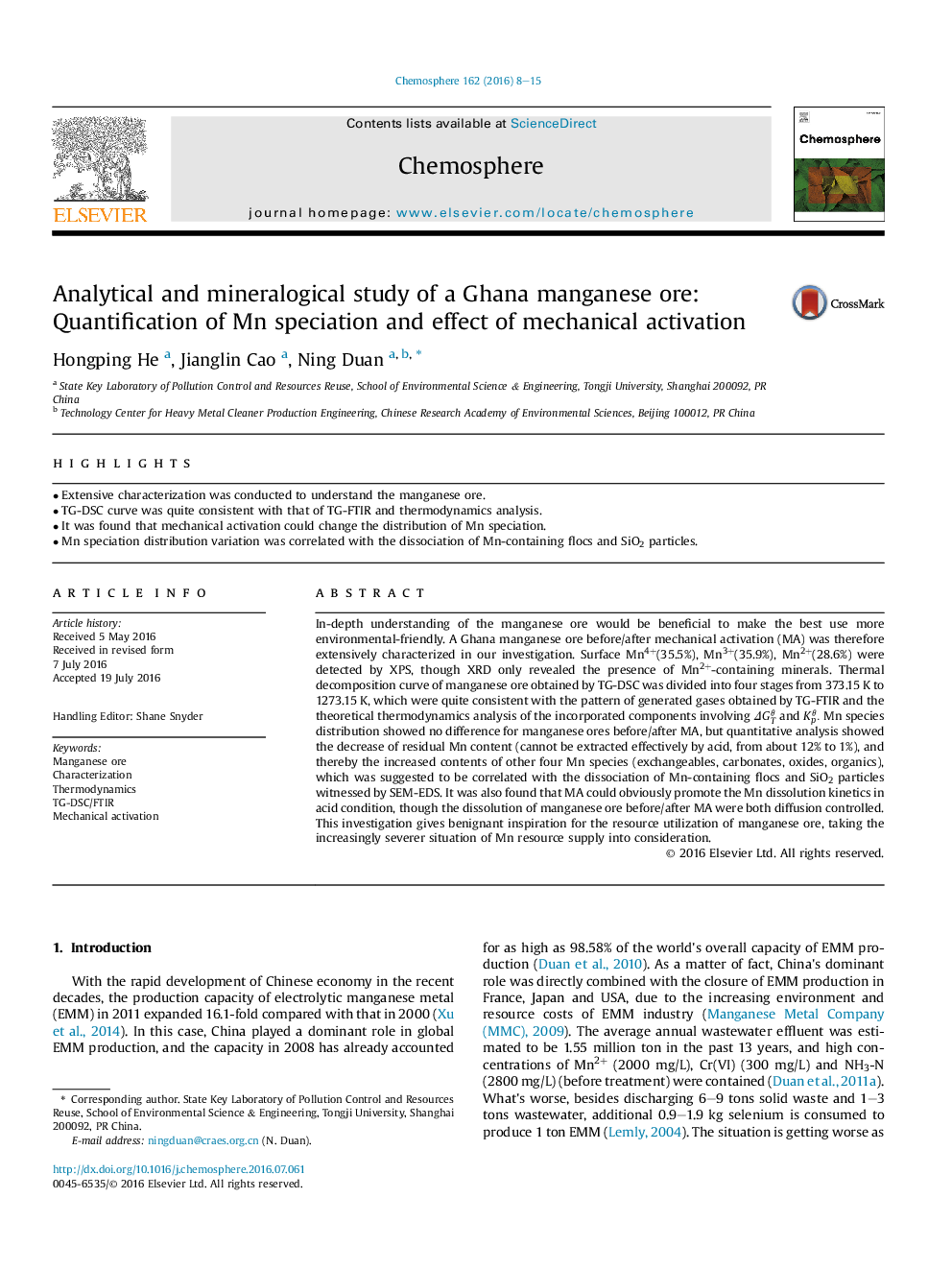| Article ID | Journal | Published Year | Pages | File Type |
|---|---|---|---|---|
| 6306206 | Chemosphere | 2016 | 8 Pages |
Abstract
In-depth understanding of the manganese ore would be beneficial to make the best use more environmental-friendly. A Ghana manganese ore before/after mechanical activation (MA) was therefore extensively characterized in our investigation. Surface Mn4+(35.5%), Mn3+(35.9%), Mn2+(28.6%) were detected by XPS, though XRD only revealed the presence of Mn2+-containing minerals. Thermal decomposition curve of manganese ore obtained by TG-DSC was divided into four stages from 373.15 K to 1273.15 K, which were quite consistent with the pattern of generated gases obtained by TG-FTIR and the theoretical thermodynamics analysis of the incorporated components involving ÎGTθ and Kpθ. Mn species distribution showed no difference for manganese ores before/after MA, but quantitative analysis showed the decrease of residual Mn content (cannot be extracted effectively by acid, from about 12% to 1%), and thereby the increased contents of other four Mn species (exchangeables, carbonates, oxides, organics), which was suggested to be correlated with the dissociation of Mn-containing flocs and SiO2 particles witnessed by SEM-EDS. It was also found that MA could obviously promote the Mn dissolution kinetics in acid condition, though the dissolution of manganese ore before/after MA were both diffusion controlled. This investigation gives benignant inspiration for the resource utilization of manganese ore, taking the increasingly severer situation of Mn resource supply into consideration.
Related Topics
Life Sciences
Environmental Science
Environmental Chemistry
Authors
Hongping He, Jianglin Cao, Ning Duan,
